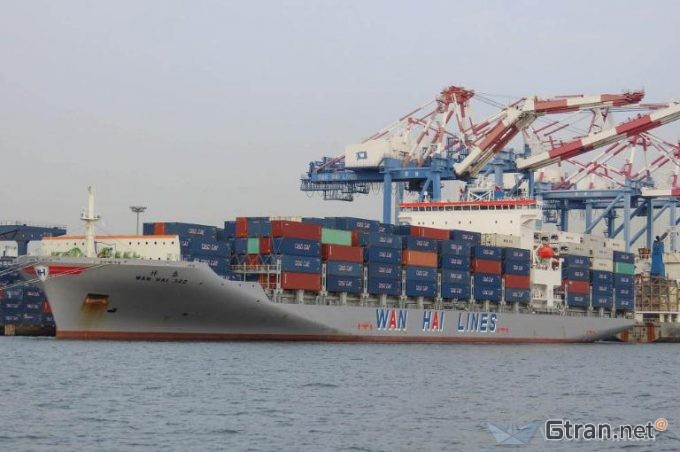Evergreen and Wan Hai chiefs admitted yesterday that the continuing Russian war on Ukraine meant revising the shipping market outlook of improvement after a poor first quarter.
Both Taiwanese liner operators were holding their AGMs and Evergreen president Eric Hsieh said Q1 23 net profit had plunged 95% year on year, to $165m.
He said the Russia-Ukraine war was still the most important factor affecting the market, adding: “If the war ends, we expect cargo volume in H2 will be better than in H1. Freight rates depend on supply and demand.”

And he said: “The IMO’s carbon emission regulations came into effect this year, requiring ships to reduce their speed. Old ships that cannot comply with the regulations will have to be scrapped, and this should absorb about 10% of capacity, alleviating the original market’s doubts about excess supply.”
He added that by this month, the Ocean Alliance, of which Evergreen is part, had voided 218 voyages to reduce operating costs.
Evergreen currently operates 213 ships with a capacity of 1.66m teu, with 46 newbuildings of around 420,000 teu pending delivery.
Wan Hai, meanwhile, attracted some shareholder wrath as, based on 2022 results, it declared a dividend of just TWD5 ($0.16) per share, compared with Evergreen’s TWD70 ($2.28).
Chairman Chen Po-ting said that, after consecutive quarterly losses, in Q4 22 and Q1 23, the company had to be conservative and preserve cashflow. And, like his Evergreen peer, Mr Chen blamed the Russia-Ukraine conflict for the sluggish box shipping market.
But he added: “After waiting for the market to stabilise, we’ll consider issuing additional dividends.
“The dividend distribution mainly considers the current turmoil in the global shipping market. In the past two years, Wan Hai has expanded from its core intra-Asia focus to transpacific routes. Freight rates are at the bottom, and it’s not easy to improve the situation immediately.”


